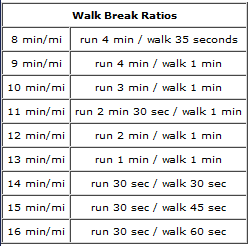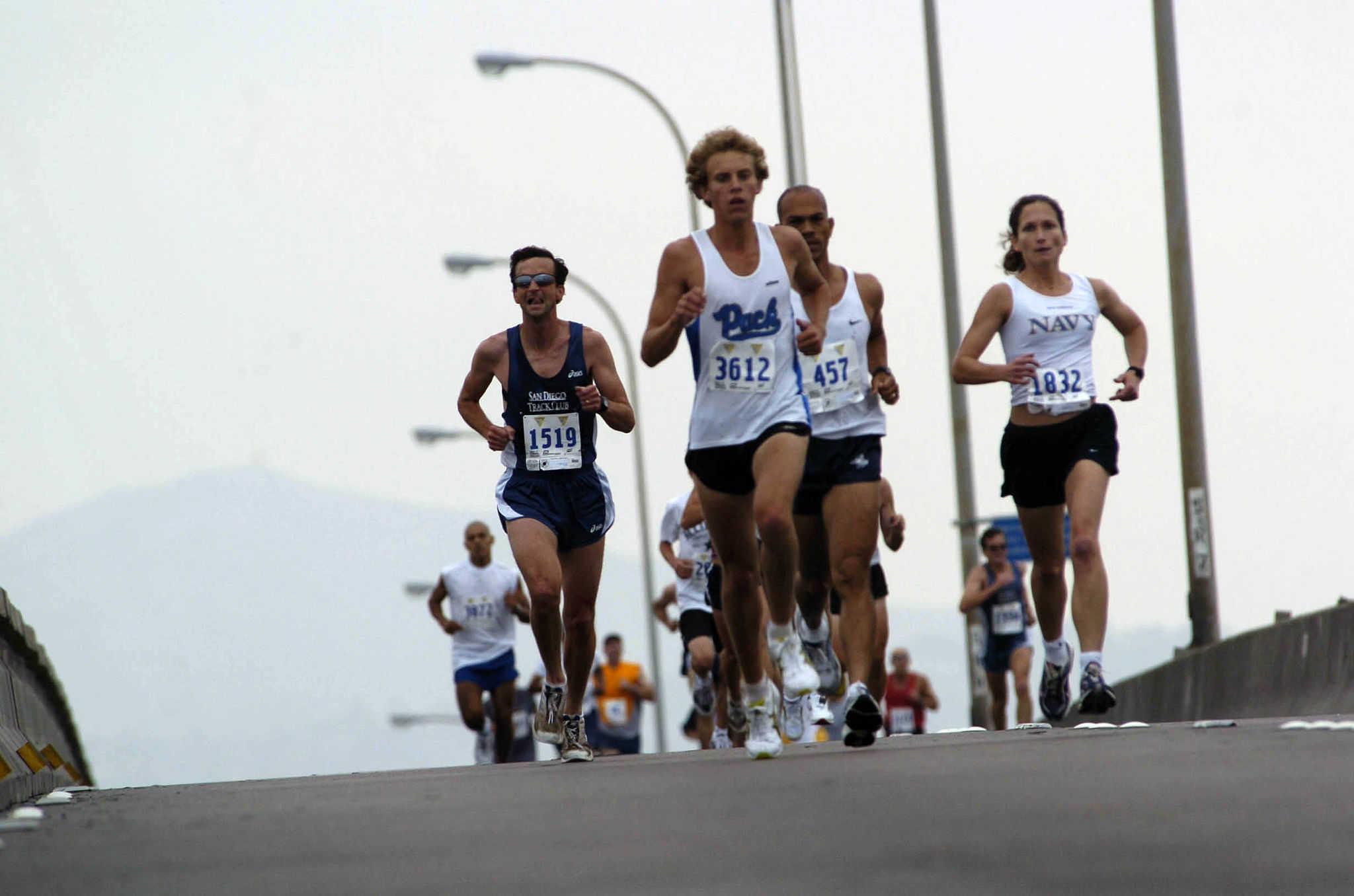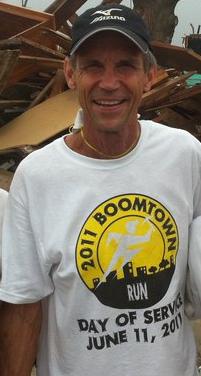I recently was following a friend of mine on Facebook as he posted regular updates about his upcoming marathon. First he posted that he had signed up for the marathon and was excited! Then he posted he was going to start training. Then a couple of weeks later he would update that his training was not going well.
As the race day got closer, he talked less and less about training. In fact, his post the day before the marathon was something like this, “Running the Marathon tomorrow…this is not going to end well”.
And he was right.
The next day he shared with us all on Facebook that (in summary): “That sucked! I finished the first half of the marathon in 2 hours and 10 minutes, and well I’ll let you guess what happened the second half. Lets just saw that not training was a REALLY bad idea!”
Unfortunately, I don’t think this story is totally uncommon for first time marathoners. If you have a marathon coming up, hopefully you’ve done a bit more training than my friend did. Training is difficult, especially if you’re just getting started with the high volume of running involved in marathon training. If running for long periods of time without a break seems like too tough a row to hoe, one way to ease in and efficiently increase your fitness is to use a Run-Walk method to not only train, but also to run the marathon on race day. (And in fact even if you have trained, this might be a good method for you to increase performance).
Today I wanted to talk about why using the Run-walk method of completing a marathon or half marathon is a good idea, some of the more prominent approaches, and some success stories from people who have tried it.
What is the Run-Walk Method?
I actually think that if my Facebook friend would have gone out slow and used a Run-walk method, he could have both enjoyed his marathon experience much more AND have gotten a faster time. I suspect that he walked almost all of the last 13 miles very slowly.
However, if he would have gone out at a nice and easy 10 min/mile pace for 1/2 mile or even a mile and then walked a few minutes and then simply repeat the rest of the way; he likely would have felt much better. Going out too fast in your first marathon is a common mistake (I was guilty of it too!); especially if you have under-trained (like my friend).
Many different specific training programs exist; but in general the run then walk method is just as it sounds. After running for a specific distance or period of time, then start walking to help your body recover for a time or distance, then begin running again.
If you are just starting out with running, then you might want to only run for 1 or 2 minutes and then you can walk for 5 or 6 minutes. Then just repeat. As you get more advanced, you will be running 5 or 6 minutes and walking for only 1 minute.
Overall, I hesitate to give any specific advice for what everyone should be doing as everyone body and training level is different.
The Galloway Method
The idea of combining running and walking is one that has been around for a while. One of the most famous practitioners of run/walk is Jeff Galloway, a name to know in the field of running.
Who is Jeff Galloway?
If you’ve never heard of him, here are the highlights, as well as why his method carries so much weight. Jeff Galloway began his career as an accomplished high school and collegiate middle-distance and distance runner. He won All-America honors at Wesleyan University in the late 60’s running cross country and track, then went on to win the inaugural Peachtree Road Race in Atlanta, Georgia in 1970.
From there, he attended graduate school at The Florida State University (FSU), an elite educational institution in Tallahassee, Florida. While at FSU, he participated in the Florida Track Club, where he ran with, among others, Frank Shorter.
Galloway and Shorter, along with fellow Florida Track Club member Jack Bacheler, all made the 1972 US Olympic Team, Galloway in the 10K, Bacheler in the marathon, and Shorter in both events. Conventional wisdom has it that Galloway should have made the Olympic team in the marathon as well, but instead he paced Bacheler in the marathon trials.
In 1974, Galloway won the Honolulu Marathon with a time of 2:23:02.
Perhaps more importantly, in 1976 Jeff Galloway opened nationally-renowned running store Phidippides in Atlanta. Phidippides grew to be a nationwide store with over 35 franchises, and along with his racing accomplishments, established his bona fides as America’s Running Coach.
All of these accolades and accomplishments alone would qualify Mr. Galloway as a leading voice in the field of running, but in 1984 he published one of the seminal works on the subject of distance running, Galloway’s Book on Running. That’s right, Jeff Galloway quite literally wrote the book on running. The book has, to date, sold well over 750,000 copies, an unbelievable number for a book of its kind.
What made Galloway’s Book on Running so revolutionary was that it recommended, both for beginners and experts, a combination of running and walking in carefully-tailored sequence to minimize fatigue and injury, while maximizing performance.
Here are some of the principles behind the Galloway Method, and the reason why it has become such an influential technique:
- Continuous use of a muscle will result in quicker fatigue
Stressing muscles to increase their capacity and efficiency is undeniably the objective of any training program, but continual stress has been found to be more likely to lead to fatigue than the same stress distributed to include rest. In other words, you’re looking to apply a certain amount of stress on the muscles, and adding walk breaks allow you to properly calibrate the level and amount of stress.
- The longer the run segment, the more fatigue
This is especially important for beginners. As you increase the capacity and endurance of the muscle and connective tissues, your body will be able to bear a longer and longer interval. But especially when you begin training and extending the length of your long runs, it is crucial to remember that time spent among the walking wounded is training time lost.
- Run Walk Run is a form of interval training
We previously talked about the significant benefits of interval training here. Creating discrete intervals of running between periods of lower intensity (walk breaks) actually can allow you to sustain a high pace, which acts like a kind of interval training. This can lead to increased performance overall, even in light of any increased time that might result from walking.
- Conservation of resources
As demonstrated with the concept of even pacing, as well as the idea that going out too fast at the beginning of a race can actually lead to an overall reduction in performance, one of the fundamental concepts any runner must embrace is that you have a finite reservoir of physical resources available to you when that gun goes off. If you manage those resources in an economical manner, they will permit better performance overall. The Galloway Method and run/walk are ways to achieve that more economical use.
- Quicker recovery
As runners, we often focus so much on how well we’re running today that we forget that tomorrow’s run can be just as important in our training program. Pushing our body too far and fatiguing our muscles excessively in one training run can compromise our ability to do another training session later on in the week. If you start missing runs or doing a poor job of them because your body is excessively fatigued, you will start to see the loss of results in the final race at the end of your training program. Run-walk-run, as Jeff Galloway sometimes calls his method, will allow you to reduce the lingering effects of fatigue in subsequent runs.
- Less stress on the “weak links”
Each of us comes to running with our own strengths. Some of us are fast, some of us can run all day, some of us are more mentally capable than others. But each and every one of us has a weakness. Appropriately stressing our bodies not only can allow us to avoid excessive fatigue, but it can help us avoid injury. By not overtaxing ourselves, we can compensate for those unknown vulnerabilities that lurk within.
- Ability to enjoy endorphins
Running is fun! Keep it that way. Excessive stress on our muscles can cause the release of stress hormones. Those hormones can result in an overall feeling of malaise, but they also can interfere with one of the most enjoyable aspects of running: endorphins. These endorphins are the source of the famous runner’s high that gets us out before the sun comes up on a day we could be sleeping in. The Galloway Method, in addition to making you a faster runner, can literally make you feel good by allowing your body to enjoy these euphoria-inducing hormones.
- Reduce core body temperature
An elevated core temperature is, among other things, associated with reduced performance and an increase in fatigue. In short, when your body overheats, one of its defense techniques is to convince you to slow down. Slowing down is bad. Keep your core temperature lower by taking walk breaks, especially in hotter weather.
Here’s Galloway himself talking about the benefits of the run-walk-run method:
The Right Ratio for You
Overall, you can tailor the intervals of walking and running to what suits your training level. However, Jeff Galloway is well known for developing his own run/walking training programs for both beginners and advanced runners. Here is one runner’s positive experience using the Galloway method.
Here’s Galloway himself talking about the ratio:
In addition to the method above, there are two primary ways to calibrate your run-walk ratio as contemplated by the Galloway Method:
- A simple chart based upon your desired race pace, and
- A calculation based upon the results of a Magic Mile
- The Pace-Based Ratio:
Jeff Galloway has developed training materials, including this free Race Prediction Calculator here. Along with that calculator, Jeff has provided a chart showing recommended Walk Break Ratios. I’ve included the chart below:

Overall, I think this chart provides a good starting point if you feel like implementing a run-walk method is right for you, but if you want a bit more precisely-tailored way of getting just the right ratio, there is the Magic Mile.
- The Magic Mile and Calculating your Ratio
The Magic Mile is a time trial on the track under ideal conditions, and is used as a predictor of a runner’s performance over a longer distance, including the 5K, 10K, and marathon. It’s similar in its use to the Yasso 800, another method often used for predicting performance in longer races.
In order to maximize the utility of the Magic Mile in calculating the run-walk-run ratio, the following steps should be taken:
- Warm up with a slow one-mile run
- Do a few “acceleration gliders” (these are short faster runs to warm up the muscles
- Keep as even a pace as possible while running the mile
- Run about as hard as you can for one mile, but don’t overexert yourself to the point of throwing up.
- After the time trial is over, walk for 5 minutes, then run 1-6 miles as needed to get your mileage for the day.
Once you have your time for the Magic Mile, it is a simple calculation to find the right predicted pace to plug into the chart above:
- Add 33 seconds to the Magic Mile pace to find your pace for a 5K
- Multiply your Magic Mile pace by 1.15 to get your predicted 10K pace
- Multiply your Magic Mile pace by 1.2 to get your predicted half marathon pace
- Multiply your Magic Mile time by 1.3 to get your predicted marathon pace
Once you’ve made the appropriate calculation to determine your predicted pace, you can use that number to find the proper run-walk ratio in the chart above. This method is a bit more complicated, but it has the added benefit of using a fairly accurate measure of current conditioning to determine the appropriate training regimen, which is in itself superior to just guessing and wishful thinking.
Whatever the means by which you arrive at your ratio, you might be wondering to yourself if the Galloway Method specifically (or the Run-Walk method in general) actually works, and whether other people have had success with what sounds like a counter-intuitive approach to running.
Real Runner’s Using the Run-Walk Method
After doing some searching, I’ve been surprised to see how many people are getting positive results from implementing a little walking in their runs! Here’s a few testimonials from around the web for the Galloway method:
- WhoHastheRuns shares his experience using the Galloway training program.
- Joe of Run with Perseverance shares his positive experiences after 5 years of using walking as part of his training regimen.
- And an interesting story in the NY Times of a Run-Walker that qualified for the Boston Marathon!
- Jeff Galloway himself wrote a guest post on Active.com explaining some of the benefits of walking/running.
So, while Run/Walk training is most likely to be used by newer runners, heavier runners, or more senior individuals…it can actually be used by anyone. Many people, including very experienced runners have found benefits from adding walking intervals to their runs.
Conclusion
So, please don’t be like my friend on Facebook that had a miserable first marathon experience because of lack of training and going out to fast in the first half of his marathon. Why not implement a little bit of walking in your first marathon? As you gain experience, you might decide to eliminate the walking in future races…but maybe not!
Overall, its a great way to be able to participate in races, even if you haven’t trained as well as you had hoped. Or it can be a great stepping stone to more intense marathon training, should you decide that’s what you want to do.



Thanks for the interesting article. I have been wondering about run/walk for a marathon i will run in May 2014.
One thing I do not understand is what pace should one keep. According to my 10K times i should run a 9:00 min/mi pace to finish at about 4:10, if i stop every 4 mins to walk for 1 min, wouldnt that just slow down my finishing time?